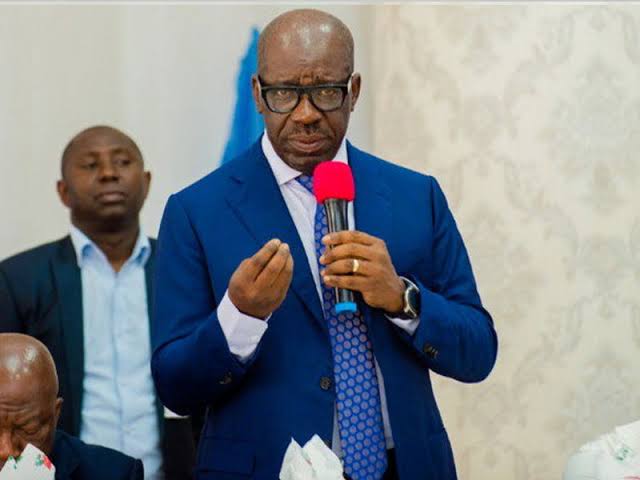Nigeria’s obsession with owning refineries is counter-productive

The Nigerian government’s obsession with owning and running refineries is costing the country an average of N10 billion monthly, without producing any petroleum products despite several so-called Turn-Around-Maintenance (TAM) activities announced in the past.
For the umpteenth time, Africa’s biggest oil producer is attempting again in 2021 to get its refineries working, with the objective of weaning the country off imported fuel. However, the government’s stewardship of the refineries has been abysmal.
Nigeria’s first refinery was built in 1960 by Shell and British Petroleum with each owning 50 percent stake. They decided to do this because they were the main marketers of petroleum products (downstream products) in Nigeria – petrol, kerosene, liquefied petroleum gas (LPG), before any refinery was built in Nigeria. As soon as crude oil was found in commercial quantities, Shell, being the largest producer joined forces with BP to build a refinery.
At that time they started with 38, 000 barrels per day because that was all they needed to meet the needs of the Nigerian economy. Two years after they increased to 60, 000 barrels per day.
Shell and BP still owned the refinery at the time, and neither the Nigerian National Petroleum Corporation (NNPC) nor any local government or player was involved.
Soon after, Nigeria joined the Organisation of Petroleum Exporting Countries (OPEC) and the organisation asked all member states should own at least 60 percent of all the major oil companies in their respective countries. This was how the government stepped in, took 60 percent and gave the oil companies 40 percent.
From about 1978, the NNPC decided to increase its shareholding of the Port Harcourt refinery owned by Shell and BP (at 50% each) to 100 percent. The refinery was nationalised essentially. Even then, petroleum imports were heavy and not meeting the required standards. This was when the Federal military government decided to site a new refinery in Warri.
The feasibility studies that were done for Warri refinery showed that Nigeria would have to build new refineries to meet the growing demands. The demand was growing at about 16 percent per annum for petrol, 12 percent for kerosene; diesel and others were about 12 – 14 percent. Fifteen percent growth of product consumption every year as of 1975 – 76 resulted in Warri refinery being completed in 1978. Immediately after that, the Kaduna project was started.
From 1990 – 91 Nigeria was completely self-sufficient in all products and was exporting to West Africa. Between 1991 and now, the refineries lost steam for lack of maintenance, as and when due. At the moment, all the refineries have been shut down; not one is producing anything today.
According to the National Refineries Special Task Force Report of 2012, during the early 1990s, Nigerian refineries produced enough petroleum products to satisfy national demand and exported the excess.
However, Nigeria’s golden age of crude oil refining was not sustained. People with a deep understanding of the sector have said that the series of so-called Turnaround Maintenances (TAM) in the last 21 years have been shams and never done properly.
The only one done properly was that of the Port Harcourt refinery in 1991, after one and half years of operation by the original contractor who brought in Saipem as a sub-contractor.
The Task Force found that all the refineries, Warri, Port Harcourt and Kaduna, had failed to meet the normal international benchmarking standards; namely, 80 – 90 percent capacity utilisation and 90 percent on-stream time efficiency for continuous operation.
This placed the Nigerian refineries at the worst rating in Africa, with only 18 percent average annual capacity utilisation in the period 2006 – 2009, according to Refineries Survey in the Oil & Gas Journal.
The most pivotal of the root causes of refineries bankruptcy in Nigeria according to the Task Force is that the current ownership structure and business model have failed to adequately provide for the safe and efficient performance of the refineries.
In the past, there have been talks of bringing partners to help refurbish the refineries and run them. The petroleum refining business is capital intensive. To repair the Port Harcourt refinery today will cost at least $1 billion. If a company forms a partnership with the government or NNPC and brings in $1 billion, or even half a billion dollars, they should demand equity share.
Equity means they have say and control over how the place is run. Nobody will touch those refineries without equity control.
This means the government needs to sell some shares. This could even be privatisation where as much as 80percent of equity belongs to a private party. Even if the government does not bring its contribution, the refinery will run, such as the Nigeria Liquefied Natural Gas (NLNG) Limited. This simply means the government gets no dividend for not contributing. It is also important that the right private investors get it.
We see the importance of the right private investors getting it and canvass same.




